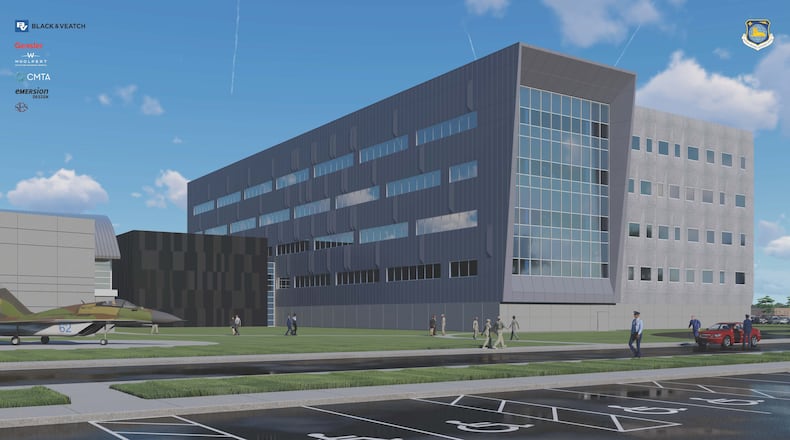The effort was presented as an exploration of consolidating services from several intelligence analysis contracts into bigger contracts, according to a request for information released May 29, 2020.
In a more recent notice, with a classified addendum, the Air Force described NOVASTAR as a $4.7 billion, 10-year contract that could go to as many as five awardees.
NOVASTAR will support the National Air and Space Intelligence Center (NASIC), based at Wright-Patterson Air Force Base, in its mission to “discover and characterize air, space, missile, forces, and cyber threats to enable full-spectrum multi-domain operations, drive weapon system acquisition, and inform national defense policy,” the original “source sought” request said last May.
“NOVASTAR is NASIC’s comprehensive S&TI (scientific and technical intelligence) mission contract for the next decade,” says one Air Force response to a list of questions companies might have. “As NASIC anticipates only up to 5 awards, each winning prime needs to bring the best possible team to meet all of NASIC’s S&TI mission requirements for the next decade.”
“Anything that’s near a billion, that has a ‘B’ on it, is going to have a community impact. And it’s going to get a lot of attention from all over the nation,” said Jeff Graley, president of Dayton defense contractor and software creator Mile 2.
Most of the work will happen at Wright-Patterson at NASIC’s on-base facility. But a company with a Dayton-area presence can “propose to complete work at their own facilities if the requirement allows this work to be completed remotely and the offeror (business) has a properly cleared facility,” the Air Force Q&A states.
“If you’re going to do that work, you’re going to need to be here (near Wright-Patterson), you’re going to have to have a presence here,” Graley said. “So there are companies who don’t have a presence in Dayton who win this work or who are super-interested, they’re going to set up shop to start having that conversation.”
Graley compared NOVASTAR’s impact to the ATEP program, the Advanced Technical Exploitation Program, which was a $960 million contract in support of NASIC. But obviously, the numbers around NOVASTAR are bigger.
“As soon as people started to figure out how they were going to go with that, I think, it has been a constant state of chatter,” he said. “It’s a big pie.”
But a quiet state of chatter. There is clear hesitation to talk openly about a large Air Force intelligence contract that hasn’t been awarded yet.
A spokeswoman for NASIC referred questions to the contracting officer involved, who advised a reporter to periodically visit the government’s contract award management site, SAM.gov.
“At this time no information can be released outside of the information already available on the governmental point of entry,” said Andrew Gill, the contract officer involved with NOVASTAR.
Companies are typically hesitant to talk about a contract before it has been awarded. Representatives of Radiance Technologies, which has had large contracts with NASIC, did not respond to questions. A spokesman for busy Fairborn defense contractor Peerless Technologies declined to comment. The staff of U.S. Rep. Mike Turner, who serves on the House Intelligence Committee, referred questions to the NASIC public affairs office.
A spokesman for Northrop Grumman declined to go into detail about the contract, but he said his company expects a final “request for proposal” from the Air Force perhaps this July, with a final award decision being made in about October 2022. The company has about 150 employees working for Wright-Patterson, that spokesman noted.
In 2013, Northrop Grumman joined the Radiance Technologies team in competing for NASIC’s ATEP II contract at the time. The spokesman declined to say who Northrop Grumman’s partners will be in the NOVASTAR effort.
Mile Two is talking with company teams about playing a role on NOVASTAR, Graley said.
Loren Thompson, a defense analyst and chief operating officer of the Arlington, Va.-based non-profit Lexington Institute, said NASIC’s crucial mission can be expected to draw business.
“NASIC is a magnet for defense contractors because it’s a critical intelligence operation that spends a lot of money on gathering and analyzing information,” Thompson said.
“The potential size and scope of NOVASTAR should make it an attractive opportunity for vendors in the defense and intelligence sector,” Bloomberg news service said last year.
About the Author


